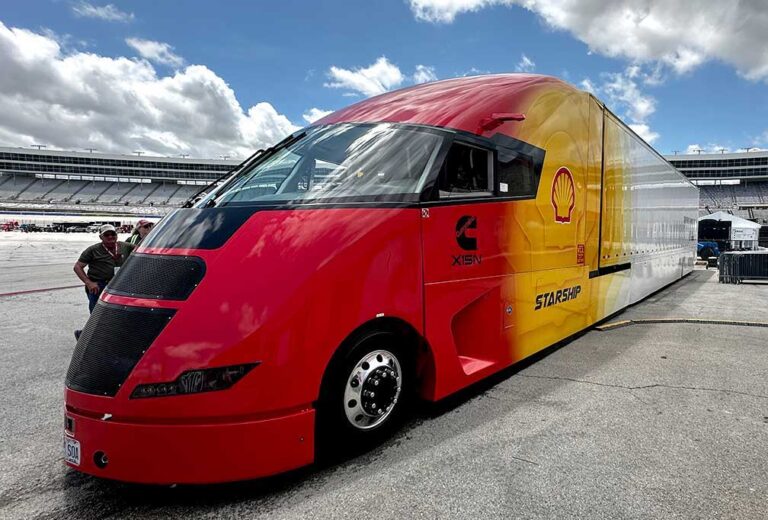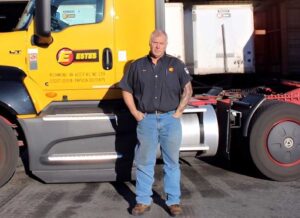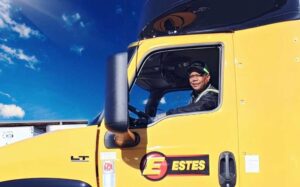HOUSTON — In the continuing effort to redefine what’s possible in transportation, Shell’s Starship program ranks at or near the top of radical engineering feats in truck technology. The program, which unveiled the original Starship in 2018, has since begat two other generations of the groundbreaking truck and trailer, providing a tantalizing glimpse of what’s to come in the field.
Ryan Manthiri, engineering manager for the program, said while the concept vehicles combine a series of highly complex design and technological elements, the astonishingly simple premise upon which they were conceived has remained constant.
“Commercial global transport accounts for about 9 percent of global CO2 emissions. That’s basically made up of, like, 17 million vehicles that operate in this global supply chain carrying around 22 trillion ton kilometers of cargo each year,” he said. “The scale of the challenge to decarbonize the sector is huge.
“We wanted to create a material demonstration for the sector of how we can come together, collaborate across different even technical boundaries to showcase significant reductions in energy usage and CO2 emissions,” he continued. “That was the underlying philosophy for the truck itself.”
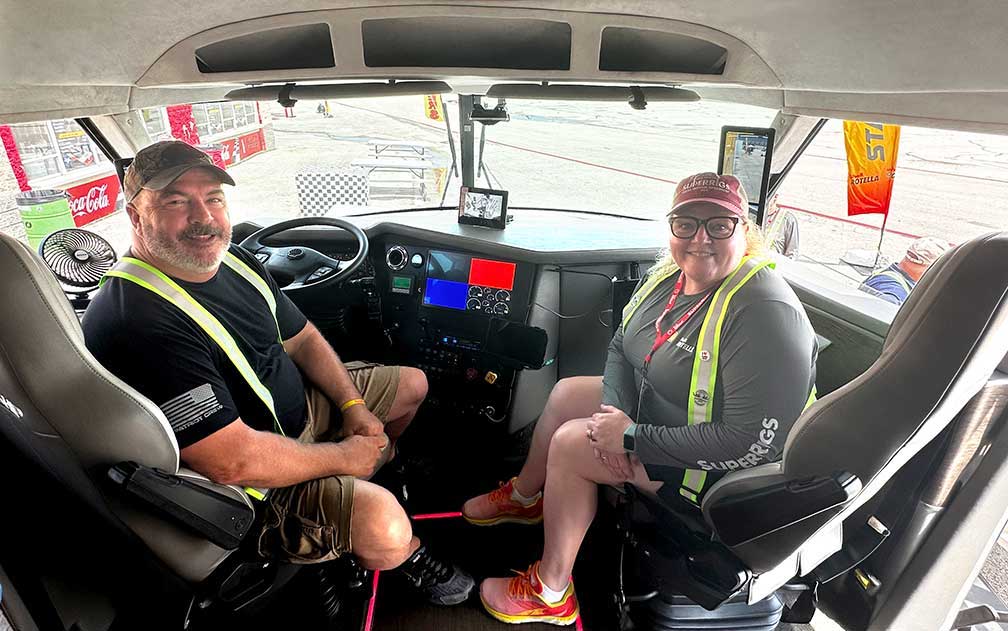
Starships 1.0 and 2.0 leaned heavily into radical new design, advanced technology and space age lubricants built on increasingly efficient diesel power plants, achieving fuel economy and freight-ton efficiency that well exceeded the national average for Class 8 diesel trucks. Starship 3.0 is steeped in these elements while rolling out one important difference, the incorporation of alternative fuels.
“Nobody knows what the next thing is. There’s really no definition, you know, is it going to be hydrogen? Is it going to be electric? Is it going to be natural gas?” said Heather Duffey, Shell’s global commercial road transport communications manager. “The answer was yes to all of it, right? So that’s where we started looking: ‘What can we do now? Let’s not talk about what’s further down the road, because there’s plenty of stuff we can do now to go ahead and start reducing carbon emissions.’
“At the same time, our customers, especially large fleets, are not going to just make a change just to make a change and see how it works,” she noted. “That’s where we were like, ‘Let’s put it to the test. Let’s see what we can do. Let’s see how we can showcase our technological leadership in the industry and in this sector.’”
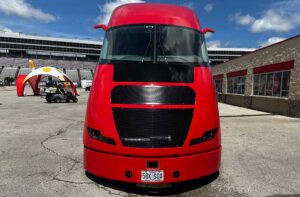
Starship 3 includes two models, one operating on a Cummins X15N natural gas engine and the other is a hybrid model, soon to be introduced in China. The latter model, developed in partnership with Chinese manufacturer FAW, boasts an engine that runs on Shell biodiesel, which further improves the truck’s carbon footprint.
Both trucks operate on next-generation specialty Shell lubricants such as Rotella natural gas engine oil and Spirax transmission and axle oils. While lubricants are generally considered an afterthought in existing trucks, when dealing with something as futuristic as the Starship, no detail is too small to escape innovation.
“The lubricants that we have that support the truck are just as critical as the hardware,” Manthiri said. “The engine is the heart and the lubricant is the lifeblood — and in this truck we have specially formulated natural gas engine oil. We’ve done similar things with the transmission oil making sure that the lubricant selection across the power train and the drive line are there. We want all the power coming from the engine to hit the floor with minimal resistance. That’s where these advanced lubricants come in.”
The payoff of the program has been immediate and eye-catching. Each version of the truck was put through its paces, running cross-country with a maximum-capacity load, and delivered results in fuel efficiency and emissions far superior to industry averages for a Class 8 truck. In the latest of these tests, Starship 3.0 delivered 80,000 pounds with more than two and half times better efficiency on a ton-miles per gallon basis and more than three times better emissions on a ton-miles per kg of CO2e.
Asked why an oil company would take the lead in truck design, Duffey says Shell has always stressed innovation through its internal Discovery Hub. Applying that expertise to a truck, while unique, is in keeping with the company’s forward-thinking mentality. She also said with few exceptions — the Cummins engine being one — Shell Starship sought to incorporate the best available technology regardless of origin.
“We built this to be purposely OEM agnostic, as much as possible” she said. “We felt like that was really important so that we could give a truly unbiased view of different technologies. We wanted to make sure that we weren’t showing any kind of bias towards one OEM over another in order to see what we can do and give a true evaluation of that to our customers. We work with a lot of really large fleets and OEMs, and it’s nice to be able to see the things that they have developed from the work that we’ve done that will have an impact on the industry going forward.”
The concept is not just for the present, but will be something that can be used for the future.
“One thing we frequently refer to is being a lab on wheels. That’s what Starship is,” Manthiri said. “It’s been a great proving ground for technology in hardware, lubricants and fuel.”
Dwain Hebda is a freelance journalist, author, editor and storyteller in Little Rock, Arkansas. In addition to The Trucker, his work appears in more than 35 publications across multiple states each year. Hebda’s writing has been awarded by the Society of Professional Journalists and a Finalist in Best Of Arkansas rankings by AY Magazine. He is president of Ya!Mule Wordsmiths, which provides editorial services to publications and companies.

